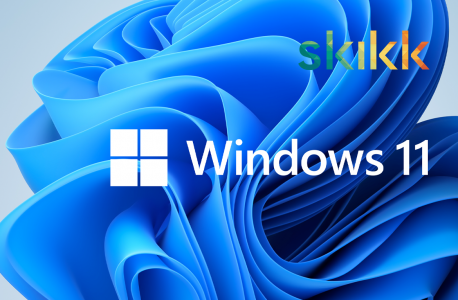Sometime in the next six months, Microsoft will begin rolling out free Windows 11 upgrades to eligible computers. When that happens, you'll likely see a message on your Windows Update screen letting you know that your new version of Windows is ready to download and install.
But is your computer or laptop suitable for Windows 11?
In recent days, there has been a fuss about various new system requirements that Microsoft sets for PCs that are allowed to run Windows 11, such as a UEFI bios, a GPT boot partition and TPM 2.0. How do you ensure that you are already Windows 11 ready?
If your laptop or desktop doesn't have a dedicated TPM chip, your CPU (processor) may have an equivalent built in. Specifically, Intel integrates Platform Trust Technology (Intel PTT) into its modern processors, while AMD uses something called PSP fTPM.
As far as we can tell, there is only one drawback to using Intel PTT or AMD PSP fTPM over a TPM 2.0 chip. When you enable BitLocker, all your keys are stored on the processor, not on a separate chip. So if you change the processor, your BitLocker keys will be deleted and problems will arise. However, not enabling BitLocker would prevent these problems.
Checking the hardware
The first step is to see if your computer can run Windows 11. This is a bit of a challenge, as Microsoft has withdrawn its compatibility testing app until later this year. Fortunately, you can largely solve this yourself.
Windows 11 needs features like the TPM (Trusted Platform Module) and Secure Boot. This is a good place to start, as the information is readily available. To find out if you have the necessary TPM technology, right-click on the Windows start button and choose Device Manager. When that window opens, click the arrow next to Security devices. It should say Trusted Platform Module 2.0. If not, you're out of luck.
Then restart your computer and go to the boot menu. Note that this varies on different computers, so you may need to refer to your manual, but it usually involves continuously pressing F7 , F9 or F11 or some other key during boot. When that happens, you should see if you have UEFI Secure Boot. When in doubt, check the information about your computer when you ordered it. Most computers made in the last two or three years have this feature.
The third step is to see if your computer's processor supports Windows 11. First you need to know exactly which processor you have installed. To do this, click on the search box next to the Windows Start button, then type in "About My PC" and you will see a menu choice that says "About your PC". Click on that. A window will open with details about your computer. Review the processor information, then check the list that Microsoft has made of every Intel processor and every AMD processor supported by Windows 11.
Minimum requirements
The other minimum requirements for Windows 11 are easy to find out. Still, it pays to check. In addition, you must be using a licensed copy of Windows 10.
If you've come this far and everything is right, you're probably good to go.
| Processor | 1 gigahertz (GHz) or faster with 2 or more cores on a compatible 64-bit processor or system on a chip (SoC) |
| Memory | 4GB RAM |
| Storage | 64 GB or larger storage device |
| System firmware | Suitable for UEFI Secure Boot |
| TPM | Trusted Platform Module (TPM) version 2.0 |
| Graphics Card | DirectX 12 Compatible Graphics Card / WDDM 2.x |
| Display | > 9" with HD resolution (720p) |
| Internet connection | Microsoft account and internet connection required to install Windows 11 Home |
What if my computer is not suitable for Windows 11?
If something is not right, there is no need to panic. For example, Microsoft may add one more thing to the list of supported processors. Otherwise you have two choices. You can decide to replace your computer with a computer that supports Windows 11, or you can decide to stick with Windows 10. While there's no firm word on this, Microsoft has indicated that computers with Windows 11 preinstalled may be as early as late October 2021.
I want a new laptop or desktop that is suitable for Windows 11
Buying new hardware with Windows 11 can make a lot of sense if you want to take advantage of the significant security upgrades that come with the new operating system. In addition, a new computer comes with new warranty, it will probably be faster and more capable than your old computer, and it will definitely be more secure.
Click here to find a laptop suitable for Windows 11.
Click here to find a desktop suitable for Windows 11.
What happens if I don't upgrade to Windows 11?
Otherwise, your choice is to stick with Windows 10 until Microsoft stops supporting it, which will likely be in 2025. By then your computer will probably be quite old and you probably want something with modern software. But if not, remember that there are still many people using Windows XP and Windows 7. Their computers work fine, and as long as they are careful they can avoid security vulnerabilities. Remember that security gets bigger every year, so it gets harder every year to avoid problems.













